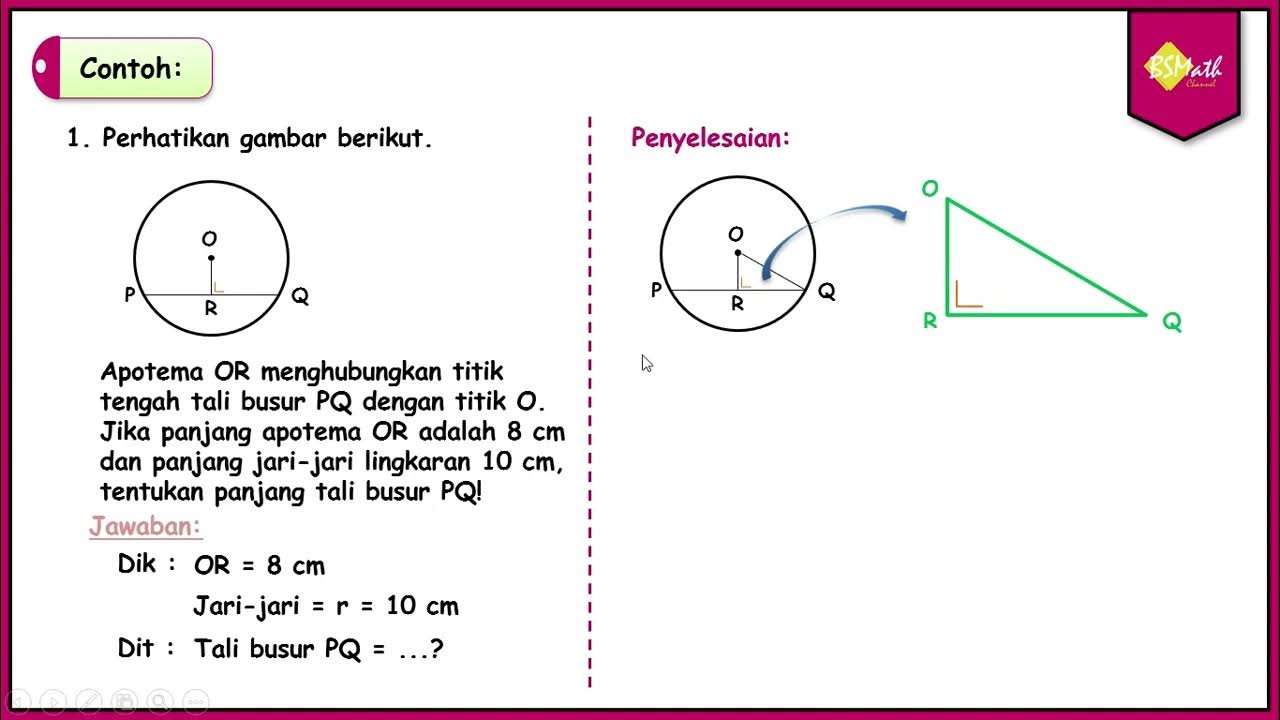What is the converse of the Pythagorean Theorem
Summary
TLDRThis educational video script delves into the converse of the Pythagorean theorem, a fundamental principle in geometry. It begins by revisiting conditional statements, drawing an analogy with 'if-then' logic to explain the theorem's application to right triangles: \(a^2 + b^2 = c^2\). The script then introduces the converse, which flips the theorem's implication to deduce the presence of a right angle from the equation's validity. It suggests using this converse to test whether a triangle is a right triangle, providing a clear and concise explanation suitable for learners.
Takeaways
- 📚 The video discusses the converse of the Pythagorean theorem, a mathematical concept related to right triangles.
- 🔍 The script begins by referencing conditional statements and their structure, setting the stage for the explanation of the converse.
- 📐 The Pythagorean theorem is introduced as a condition for right triangles, stating that a^2 + b^2 = c^2, where a and b are the legs and c is the hypotenuse.
- 🔄 The converse is presented as a way to reverse the condition and conclusion, swapping the roles of the hypothesis and the conclusion.
- 👉 The converse states that if a^2 + b^2 = c^2, then the triangle in question is a right triangle.
- 🤔 The script suggests a practical application of the converse: testing whether a triangle is a right triangle by checking if the Pythagorean theorem holds true.
- 📈 The video uses notation to illustrate the theorem and its converse, emphasizing the importance of the right triangle in applying the theorem.
- 📚 The script connects the concept of the converse to the broader topic of conditional statements, reinforcing the logical structure of the theorem.
- 🔎 The explanation is aimed at helping viewers understand not just the theorem itself, but also how to use it to determine the nature of a triangle.
- 👏 The video concludes by summarizing the converse of the Pythagorean theorem, reinforcing its significance in geometric analysis.
Q & A
What is a conditional statement?
-A conditional statement is an if-then statement, expressed as 'if p then q.'
What is the converse of a conditional statement?
-The converse of a conditional statement is when the hypothesis and conclusion are swapped, expressed as 'if q then p.'
What does the Pythagorean theorem state?
-The Pythagorean theorem states that if you have a right triangle, then the sum of the squares of the legs (a^2 + b^2) equals the square of the hypotenuse (c^2).
How is the Pythagorean theorem typically represented?
-The Pythagorean theorem is typically represented as a^2 + b^2 = c^2, where a and b are the legs of the triangle and c is the hypotenuse.
What is the converse of the Pythagorean theorem?
-The converse of the Pythagorean theorem states that if a^2 + b^2 equals c^2, then the triangle is a right triangle.
Why is the concept of a right triangle important in the Pythagorean theorem?
-The concept of a right triangle is important because the Pythagorean theorem only applies to right triangles, where one of the angles is 90 degrees.
How can you determine if a triangle is a right triangle using the Pythagorean theorem?
-You can determine if a triangle is a right triangle by testing if a^2 + b^2 equals c^2. If this is true, the triangle is a right triangle.
What is the significance of the hypotenuse in a right triangle?
-The hypotenuse is the longest side of a right triangle and is opposite the right angle. It plays a crucial role in the Pythagorean theorem.
Can the Pythagorean theorem be used for any triangle?
-No, the Pythagorean theorem can only be used for right triangles.
What does the symbol '^' represent in the expressions a^2 and b^2?
-The symbol '^' represents an exponent, so a^2 means 'a squared' or 'a raised to the power of 2,' and similarly for b^2.
Outlines

This section is available to paid users only. Please upgrade to access this part.
Upgrade NowMindmap

This section is available to paid users only. Please upgrade to access this part.
Upgrade NowKeywords

This section is available to paid users only. Please upgrade to access this part.
Upgrade NowHighlights

This section is available to paid users only. Please upgrade to access this part.
Upgrade NowTranscripts

This section is available to paid users only. Please upgrade to access this part.
Upgrade NowBrowse More Related Video

What Is Pythagoras Theorem? | PYTHAGORAS THEOREM | The Dr Binocs Show | Peekaboo Kidz

MATEMATIKA Kelas 8 - Teorema Phytagoras | GIA Academy

Cambridge Mathematician Reacts to Animation vs Geometry

02 Proportionality Theorems

Tali Busur Lingkaran - Matematika SMA Kelas XI Kurikulum Merdeka

tripel pythagoras kelas 8 part 2 (mudah) dan menentukan jenis segitiga - Abi Muis Math
5.0 / 5 (0 votes)